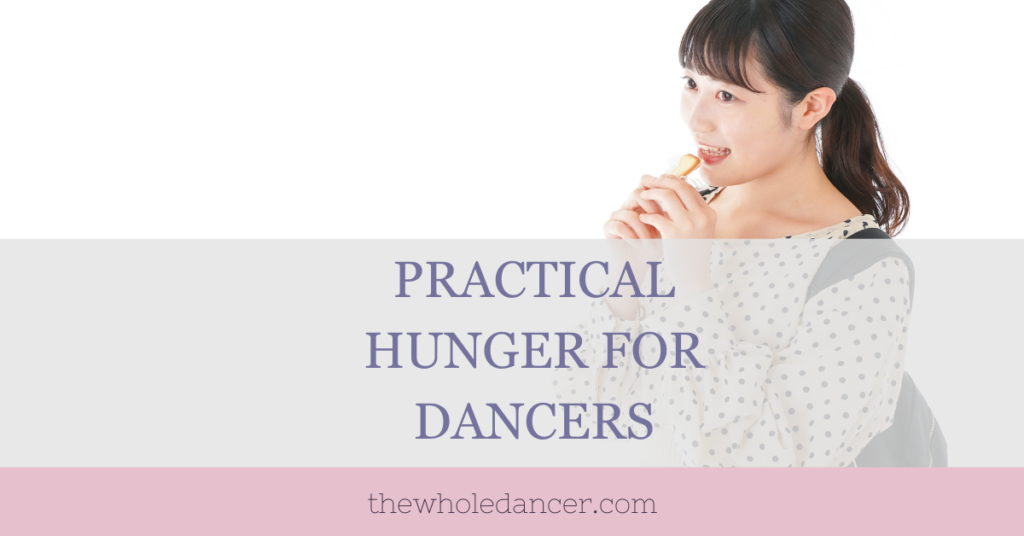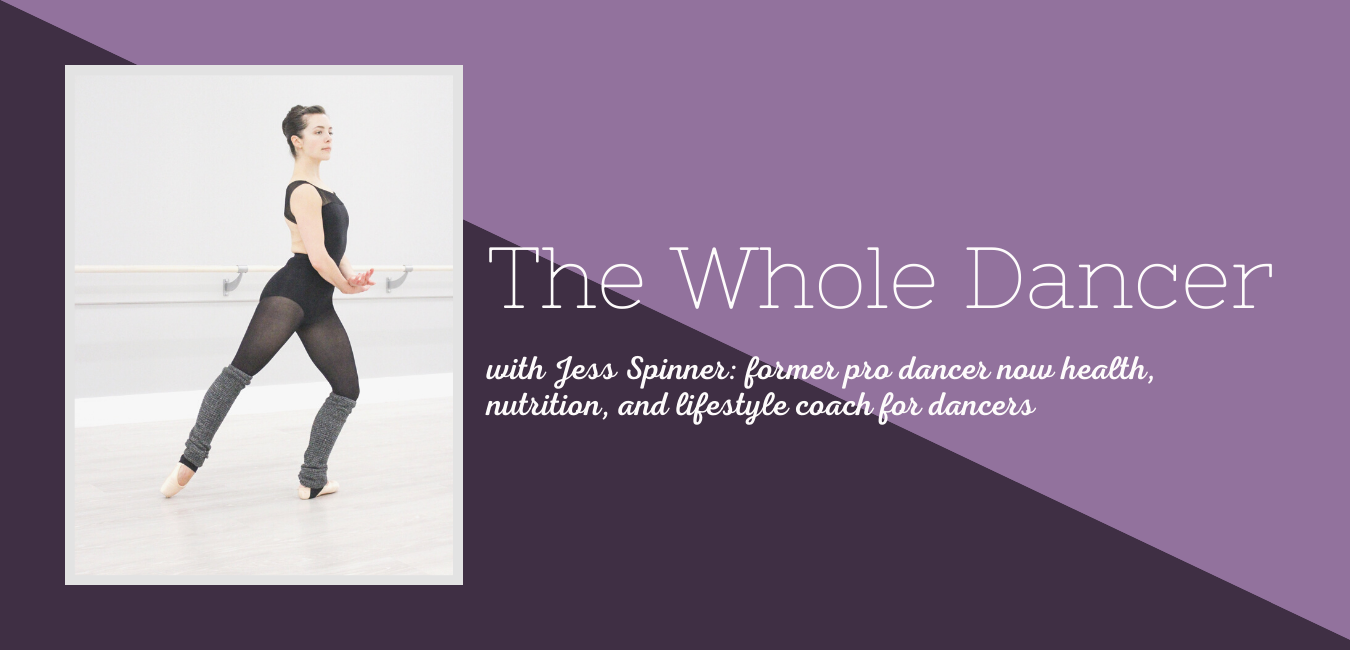A lot of the narrative around food and food choices centers on hunger. It’s a key tenet of intuitive eating: “honor your hunger.” While there’s tons of value in intuitive eating and honoring your hunger, it can be tricky for dancers.
Why is intuitive eating challenging for dancers?
Well, when you’re incredibly active, it can suppress your appetite. High activity levels result in signals from your brain to your body that blood should be redirected to your extremities and away from your gastrointestinal tract. This is why you might go through hours-long rehearsals with very low to no hunger surge.
It can also take a while for the hunger to return after a long stretch of dancing. So, it makes sense that it can be tricky to follow your intuition AND actually eat enough. Enter practical hunger.

What is practical hunger and why is it essential for dancers?
With practical hunger, you eat even in the absence of physical hunger. For dancers this is important because you need to fuel yourself, and you may not have the opportunity to eat again for a while.
As a real-life scenario, consider this: you eat breakfast at 8 a.m., then you have company class from 9:30 a.m. to 11. After class you have a 15-minute break followed by 2 hours of rehearsal before lunch. If you don’t eat between 8 a.m. and 1:15 p.m., you’re going over 5 hours without eating. Odds are, once you get to lunch time, you’ll either feel ravenous or the hunger won’t fully hit you.
This sort of situation is super common for dancers, and it’s the sort of thing that really disconnects you from your body’s needs. It’s also an eating situation that leads a lot of dancers to feel incredibly hungry once they’re finally home for the night, which might result in overeating or binge eating.
Practical hunger, practically.
The solution to the above scenario is to plan and follow your practical hunger needs. Rather than allow 5 hours to go by without eating, have a snack during your 15-minute break at 11 a.m. Then, pack and eat a full lunch consisting of protein, carbs, and fat during your lunch break whether you’re feeling physically hungry for it or not.
I realize you may not actually have a break between class and rehearsals, in which case, bring a protein bar or granola bar that you can have some of while you put on your pointe shoes.
Benefits of following practical hunger in dance.
By doing the planning required to follow practical hunger needs, you’ll be supporting your best dancing. You’ll have more energy throughout the day and won’t experience late-afternoon slumps.
Eating consistently and proactively allows you to avoid periods of time where you feel like you’re overeating or “out of control” with food. You’ll be providing your body with the energy and nutrients it needs to perform optimally and to recover from the stress of all the movement you’re requiring of your body.
Following practical hunger cues during your busy dancing days will also allow you to better attune to your physical hunger cues on the days you’re not dancing. A challenging truth to accept is that you also may feel that you’re more hungry or eating more on the days when you’re not dancing.
Dealing with increased hunger on days off.
It’s possible, even if you eat practically, that you’ll be hungrier on your days off. This is due to a possible energy deficit created on your busy rehearsal days. Your body will then increase hunger hormones signaling you to eat more.
You may even find that you crave more sweets or carbohydrates on your days off as your body is trying to replenish glycogen stores. Either way, try to honor those needs and know that by planning and following practical hunger cues, you won’t experience as many extremes in hunger fluctuations.
If you’re struggling with consistent eating or you feel like this practical hunger concept is hard to wrap your head around, set up a complimentary coaching call. We can talk through how to take pointed action that will help you feel your best in your body and confident in your food choices. Sign up here.

Pingback:Dance Schedule Changes in Summer - The Whole Dancer
Pingback:Understanding Your Fuel Needs as a Dancer - The Whole Dancer